Perfect fit: What style means for today's NHL players
Fashions change and trends prove fickle but one time-honored hockey tradition will never go out of style: looking your best on gameday.
In hockey's early days, a suit did the trick. "It was throughout the league, everybody dressed up," says Gerald McNamara, who began his career with the Toronto Maple Leafs as a practice goaltender in the late 1950s before becoming a scout for the team and then general manager in 1981. "When they came to games, they had to come with a shirt and tie. When we went on the road, they had to have a shirt and tie. And on the plane to come home, they might loosen their ties."
While those ties might be getting looser every year - or disappearing completely - the concept is immutable: "If I feel good going into a game, that always makes a difference," says Bruins forward David Pastrnak, who carries the sartorial mantle in today's NHL.
Today's stars are increasingly seeing beyond the letter of the law - codified in team dress codes - to its spirit, upheld by generations of the league's greatest dressers, from Brendan Shanahan to Henrik Lundqvist to Sean Avery. They're playing within the dress code to redefine what looking your best means.
"My favorite (way to change it up) is probably just the color of the suit, and I sometimes match it with shoes or a hat," Pastrnak says.
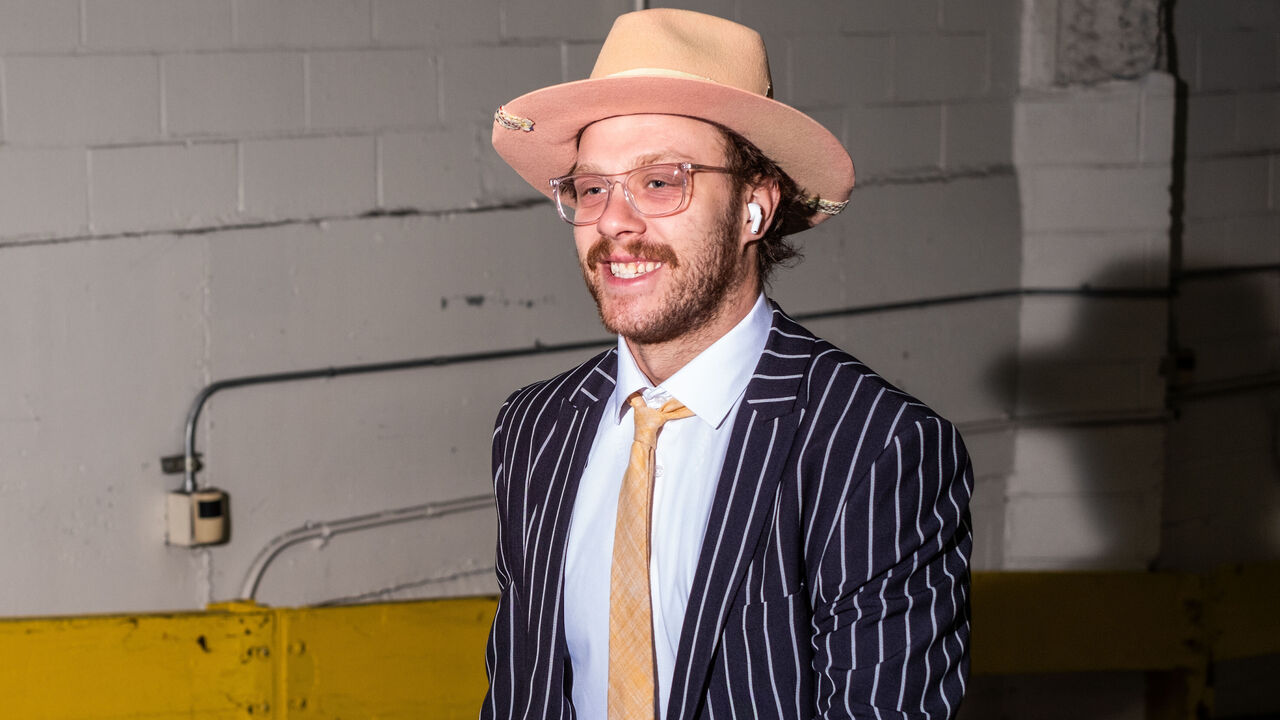
It's a balancing of tradition and modernity, and it's helping today's athletes take that step toward giving fans something they've long been asking for: a little personality.
"My mom said I was always like this as a kid," says Pastrnak, which is a lot more backstory than you usually hear from an active NHL player in a media availability.
Legacy of looking good
The idea of looking your best when showing up at the rink isn't new. An element of sophistication has been part of a hockey player's gameday mystique since the sport's early days.
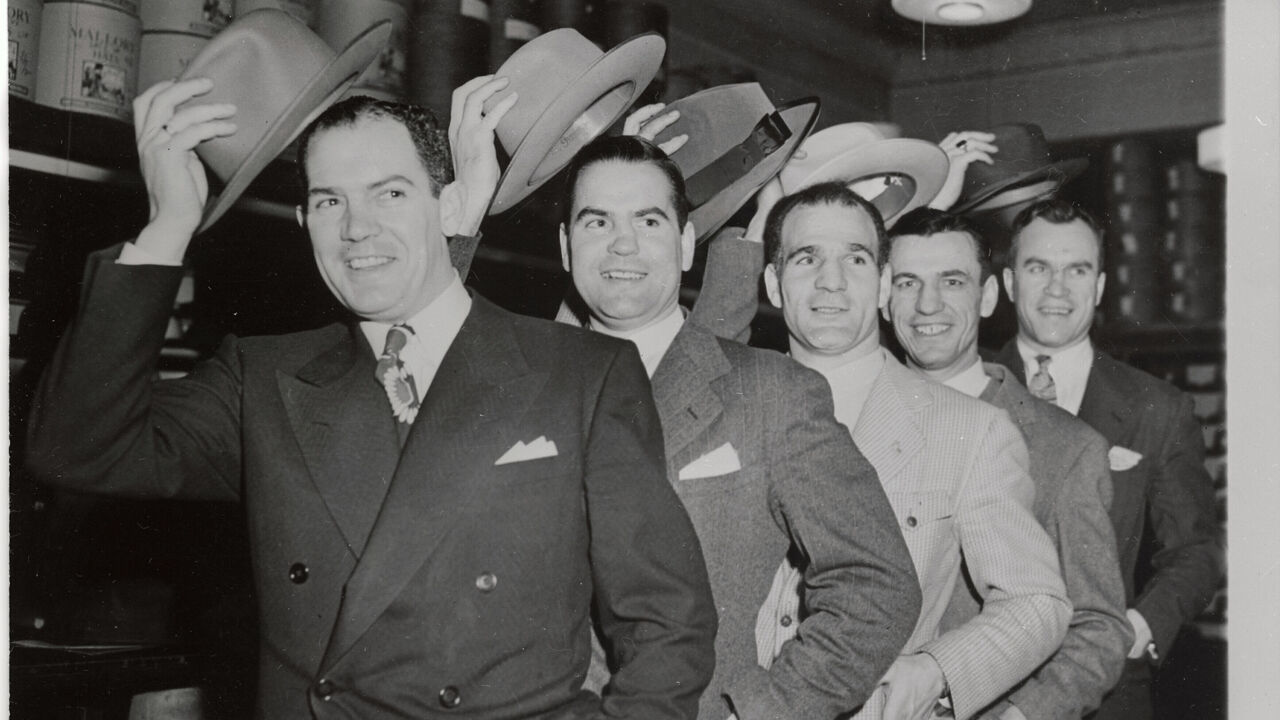
"In those days, that was the dress code and everybody had to toe the line - let's put it that way - because they could give you two weeks' notice and you were out of your contract," says McNamara.
Conn Smythe, who owned and founded the Maple Leafs, ran a notoriously tight ship. McNamara still remembers arriving at one of his early Leafs practices as a backup goalie and stumbling into a team meeting in progress. The players were attempting to unionize.
"The kid should hear this stuff too," Smythe told Leafs trainer Tim Daly, who led McNamara into the fold.
Smythe pointed to the wall where plaques dedicated to winning Leafs squads hung. "There's my record," he said.
"But you can't eat records," retorted Tod Sloan, who by that point had amassed a 10-season tenure with Toronto. Sloan was summarily traded to Chicago.
Smythe didn't tolerate dissent - not with unions and not with the dress code. No shirt, no tie, no hockey. Flouting the dress code for any reason was unthinkable. He even extended the requirement to fans, especially those in the more expensive seats.
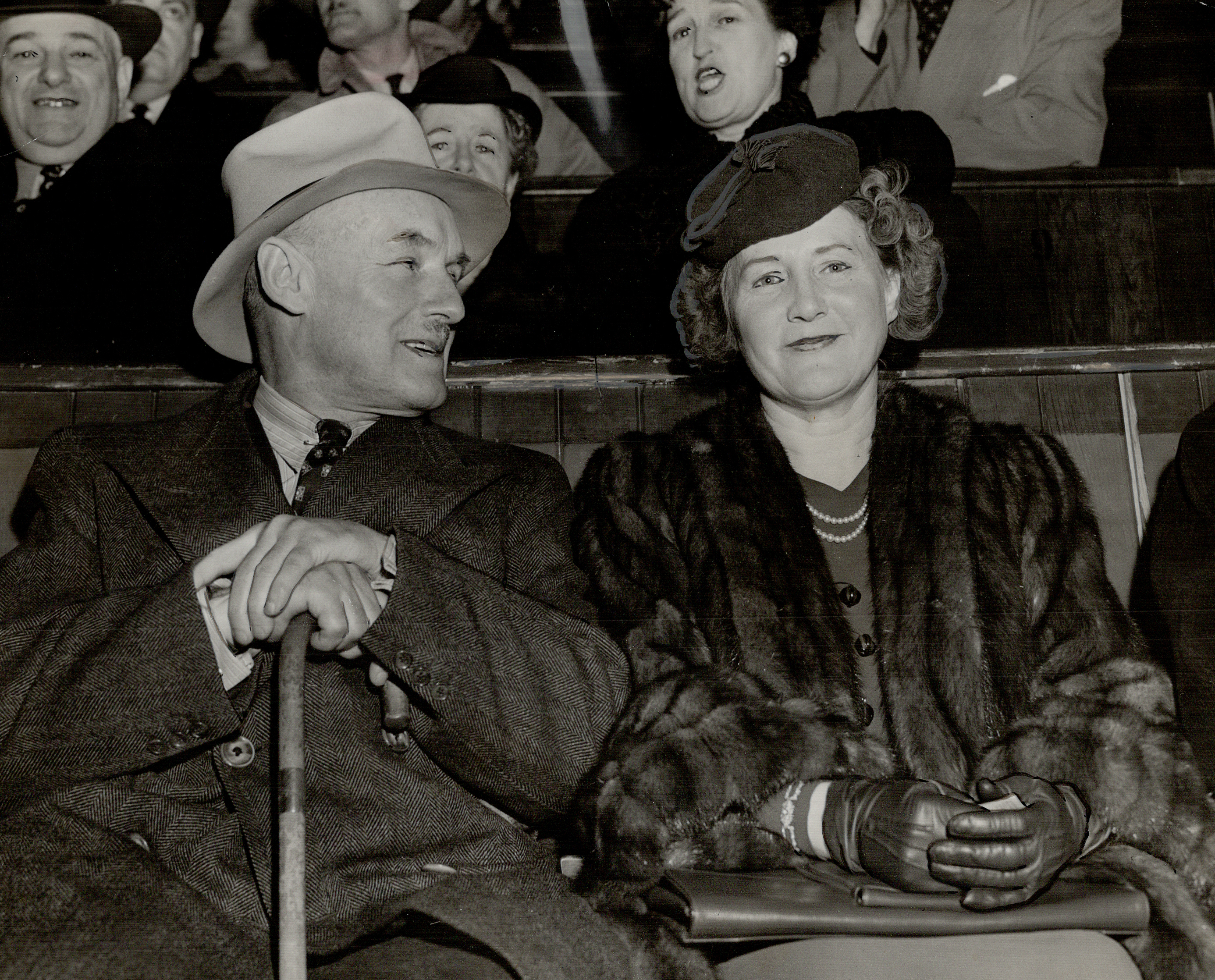
While not every team went as far as to require its fans to arrive looking dapper, the players' dress code wasn't isolated to the Maple Leafs. For a lot of NHLers, wearing a suit felt like a distinction. "There was great pride in it," says Tracy Wilson, whose dad, Johnny Wilson, once held the NHL ironman streak and won four Cups with the Red Wings in the 1950s. "It's not like these guys made a lot of money in the NHL at that point. But it was surely better than working as a factory worker or digging ditches. I remember my dad told me about getting suits made. He wanted to look sharp. The mindset was: you wanted to look like a professional."
While the method may be changing, the mindset is the same: players want to look like they're ready to work.
Today's craftsmen
J.F. Bedard will never forget the frantic call he and his business partner received from Nick Suzuki on the eve of NHL media day in 2022, when the newly named Canadiens captain arrived in Las Vegas to meet the press without his luggage, which was lost somewhere in airline limbo. "I have a hoodie and shorts and 10 interviews before 10 a.m. tomorrow," Suzuki told the two tailors, who head up Glorius Custom, a brand that's become a go-to among players looking for a perfect-fitting suit.
"All of the stores were closed," says Bedard. "But we had a pair of jeans that were going to be delivered to another client. I gave them to Nick to try on."
"Are you kidding me? These pants fit," Suzuki said.
"OK, give me five seconds, I need to make a call," Bedard replied.
"Why?" asked Suzuki.
"Because they're Crosby's pants," said Bedard, as he dialed the Penguins' star to ask if his custom outfit could be diverted. That's how the Canadiens captain ended up at media day in Sidney Crosby's clothes.
Bedard recounted the story because to him it epitomizes the importance of fashion for today's modern players. "Fashion is very strong in the NHL right now. The guys need to be sharp."

Acquiring a well-fitting suit is a process that requires something today's top athletes intrinsically understand: attention to detail. Bedard flies across the continent to perform the intimately AI-proof task of measuring them in person. "The best-case scenario is that we take the measurements because it is an art. For our business, the most important part is the measurements," says Bedard, who notes that if a player's body changes, measurements have to be retaken. "Hockey players have big thighs and slim waists, it's super hard to make some cuts - like the slim fit - work with their proportions," he says.
Custom suits - the personalization, the artistry, the handiwork - aren't going anywhere, he thinks. He designs looks for many minor-league athletes now, and more than a handful of players at the draft. "It's in their head: when they put on the suit, the shirt, and a tie, it's like a ritual," he says.
Of course, a tailor would say that. The NHL dress code, enshrined in the collective bargaining agreement, is good for business. But it's not just that. "I've always loved the dress code," says designer Tom Marchitelli, who dresses today's top stars across the NHL, NFL, MLB, and NBA. "Not just for my business, but because it adds a certain respect and class that the players bring to the sport."
While some have decried the confines of the dress code in today's age, Marchitelli doesn't see it as a style-killer. Guys like William Nylander, Auston Matthews, and Pastrnak are finding unique ways to color within the lines. "There's a ton of style in the NHL today, there's just different degrees of style and how different people interpret that word," he says.
"When you look at the way NFL players dress, each guy wants to be flashier than the next. They want to have fabrics and fits that you see from a mile away. That's because the personality of the football guy typically is that way. A hockey guy is typically more reserved. I think it's just more of a reflection of the personality of the athlete by sport."
When NHLers do want to showcase their personal style, team social media strategists are starting to help by posting real-time photos of players arriving to the rink in their fits. "You get to see them coming in and it makes them more human and more relatable. That inspires someone who goes to work in a suit every day to do something a little different to emulate them," says Marchitelli.
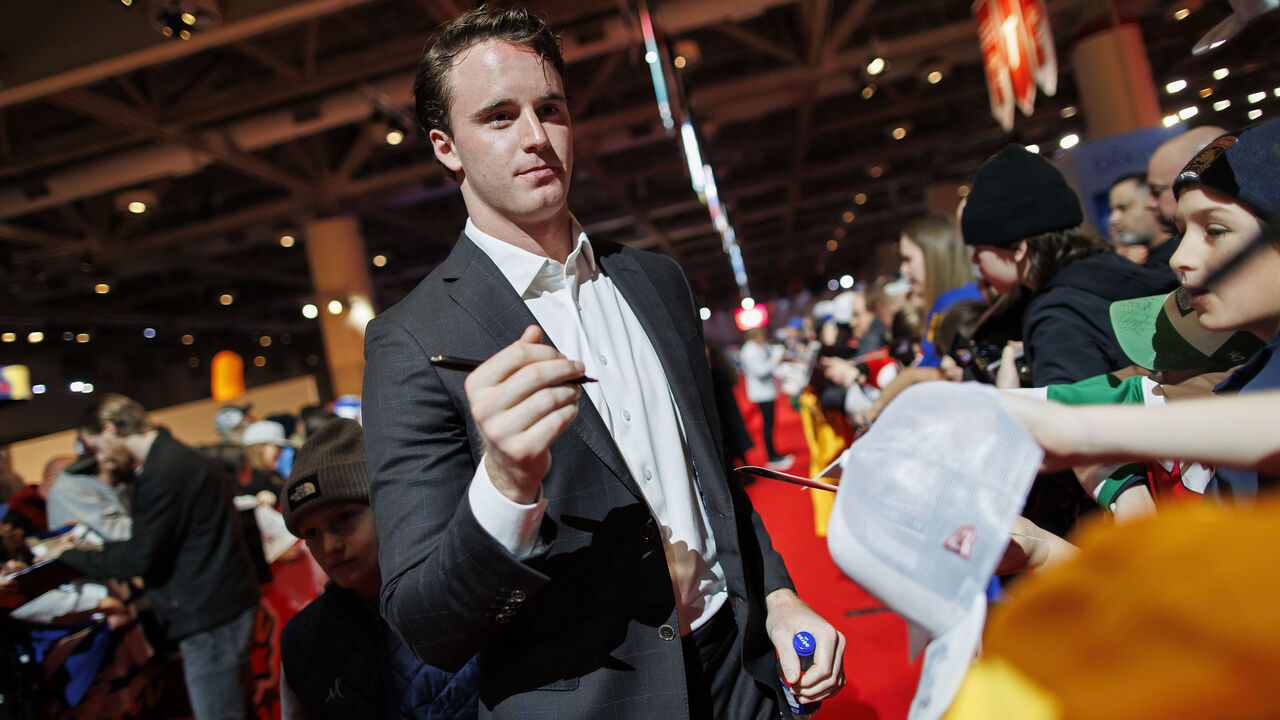
Some athletes prefer to stay on the safe side of Marchitelli's tastes. "I'm probably one of his more conservative clients," says Stars netminder Jake Oettinger, who was fitted by Marchitelli for the first time for this year's All-Star Game. But Marchitelli does have clients on his roster whose big personalities announce themselves in their fits.
"I can't think of more than three or four hockey players that would even attempt to put that thing on and try to pull it off," Marchitelli says of a suit he made for Evander Kane that the Oiler debuted in late 2023, pictured below. "That is a bold, badass man. I regard Evander as one of the best-dressed players in all of sports."

"I put a lot of thought into the suits I make for myself and wear. There's certain games you kind of pick out different suits for," says Kane. "There's a few guys who take pride in their appearance and try to add a bit more style into it. You're seeing them more around the league. A few years ago, I started wearing sneakers with my suit, no tie, button the dress shirt all the way up, you know, just different things. And I see some more guys doing that now."
Roll out the red carpet
Today's athletes, fans, and even front offices still want players to look put together when they come to the rink, but they aren't necessarily stuck on a suit and tie being the highest interpretation of what that means. What looks and feels professional today is taking on a new definition, in part due to a gradual, culture-wide inclination towards casual, and also partially due to the influence of other major sports on hockey culture.
"The pandemic bubble has broken down a lot of the dress code for the NHL," says Kesha McLeod, who now serves as Sherwood's in-house fashion director after a successful career styling athletes like Serena Williams and James Harden. "We got to see how expressive guys were and what they were wearing - not only just suits, but in casual wear. In what their interpretation was, we got to see a lot of personalities," she says.
"I really like now that people are taking chances. If we're going to have a dress code, to have fun with colors, textures, and to keep it exciting."
McLeod remembers being on the ground during what she described as the "original tunnel walk" days of LeBron James, Dwyane Wade, and Chris Bosh, when the Miami Heat turned the act of showing up at the arena into what she calls "the new red carpet" after the NBA instituted its dress code in 2005 requiring players to arrive in business casual attire. This channeled the fashion sensibilities NBA players are known for into menswear, transforming the category.
"Being one of the originators of the NBA tunnel walk and seeing the progress of that tunnel from 2006 to now - I think eventually the NHL finally got to it and saw that it was something exciting," she says. "The NHL is just capitalizing on that and embracing the players that they have."
Sherwood has branded itself on the hunch that style will be integral to engaging a new generation of fans who don't dress like their grandparents. "We started to look at the young kids coming into the sport and the influence that other sports have on hockey and hockey players. It is immense," says Brendon Arnold, Sherwood's associate vice president of brand. "You look at the NBA, you look at the NFL, you look at golf, you look at all these other sports: they have started to evolve over time and leverage creativity and individuality and self-expression and plug it into their sports," he says.
"That makes this a better game, it makes it a bigger game, you start attracting more people, you start attracting different types of people to the game that may not have even considered it because they may have believed it was stuck back in the old ages of what it used to be. Hockey is now becoming a more relevant sport with the youth because they're starting to see athletes and players and teams that resemble themselves and their values," Arnold adds.
Living by a new code
When you talk to today's on-ice leaders about values that represent hockey, they don't sound too different from the game's originators almost a century ago.
"It's a very gritty sport. You've got to really work hard," says Ducks forward Max Jones.
What's changed is the way that sentiment is expressed. Instead of suits and ties, those values are embodied in brands like cult classic Violent Gentlemen, started in 2011 in Southern California by Mike Hammer and Brian Talbert, who came from a music and action sports background.
"The hard work tied to Violent Gentlemen, the grit to their brand, is what attracts a lot of people," says Ducks forward Frank Vatrano. He recently modeled for the company in its newest lifestyle campaign announcing its biggest partnership to date, with Ebbets Field Flannels. "People in the hockey community can be really blue collar and I think that's what their company represents," Vatrano says.
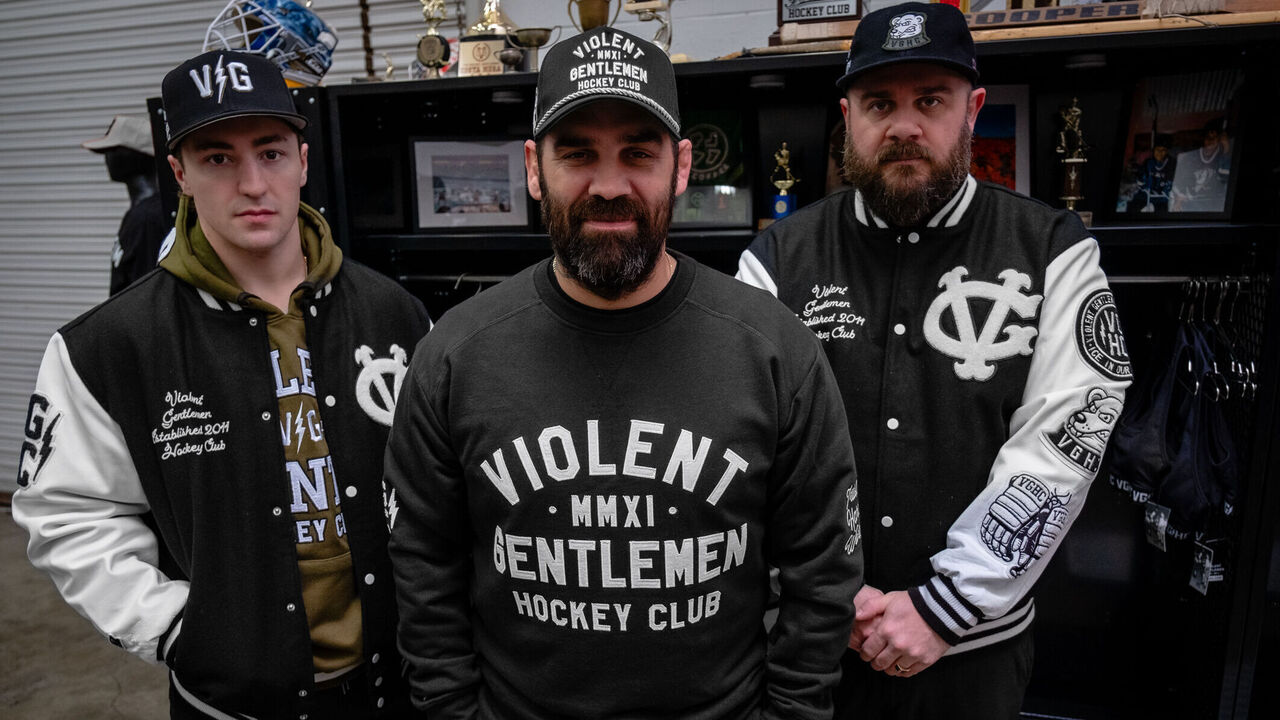
"The stuff they make is more of a streetwear-type brand," says Jones, who also modeled alongside Vatrano for the campaign. "I feel like it represents hockey players a lot."
That new expression of the same values has worked its way up to front offices, some of which have experimented with loosening restrictions on dress codes since the pandemic. In 2021, Arizona took the league-leading approach of completely relaxing its gameday dress code in a move designed to connect more directly with fans.
"We have to tap into fans any way they can relate," says Xavier Gutierrez, Coyotes president and CEO. The team's focus is not just on its existing fan base, but on what Gutierrez calls "fans in waiting."
"A central effort around that is to leverage content, experiences, and culture. Fashion, music, and food really engage these fans in waiting," he explains.
To be sure, the Coyotes have received some recent criticism about their arena issues. But the franchise appears to have turned a corner on the ice, and it's collected a lot of positive feedback from players since initiating the clothing policy changes. "It's great that guys get to show their personality a little more in the way they dress," forward Liam O'Brien says.
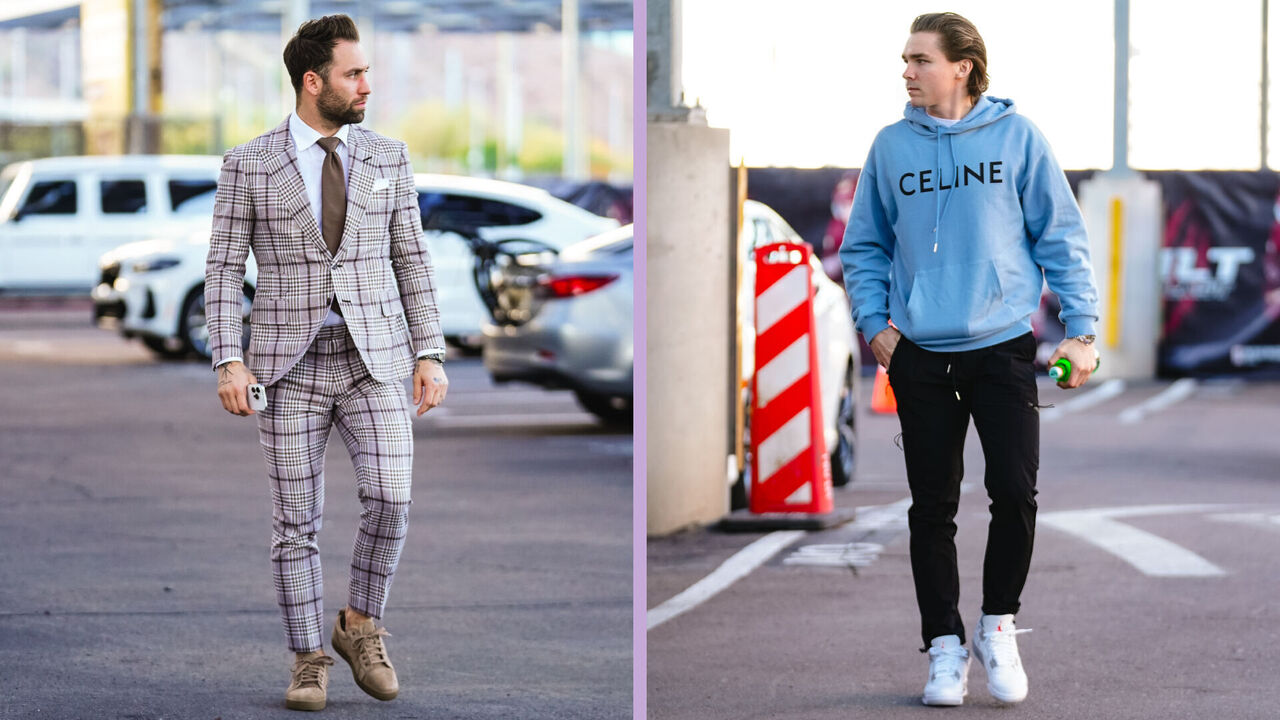
"I really enjoyed in Arizona showing up wearing whatever I wanted," says Senators defenseman Jakob Chychrun, who got a taste of the no-dress-code life before he was traded from the Coyotes to Ottawa last year. "I think you just come out feeling good about yourself. A little bit of swagger, a little bit of confidence. Confidence is everything. If you can get a little bit extra out of picking something that you think looks good out of your closet, all the power to you," he says.
While Conn Smythe might have grown his fan base through a monoculture of suits and ties, more people today see variety as the path forward.
"Personality is how community is built," Violent Gentlemen's Hammer says. "Obviously we're all here because we like hockey. That's a given. But what other common ground is there? Those more connective things, like favorite brands and fashion, are just going to connect the fans more and more to the players, and that's great for everybody," he says. "That pushes the whole sport forward."
Chychrun summed it up: "Hockey players are such genuine people," he says. "I don't think what you wear should determine whether or not we are professionals. I'm always an advocate for dropping the dress code, letting guys express themselves, doing whatever we can to grow the game."
Jolene Latimer is a feature writer at theScore.